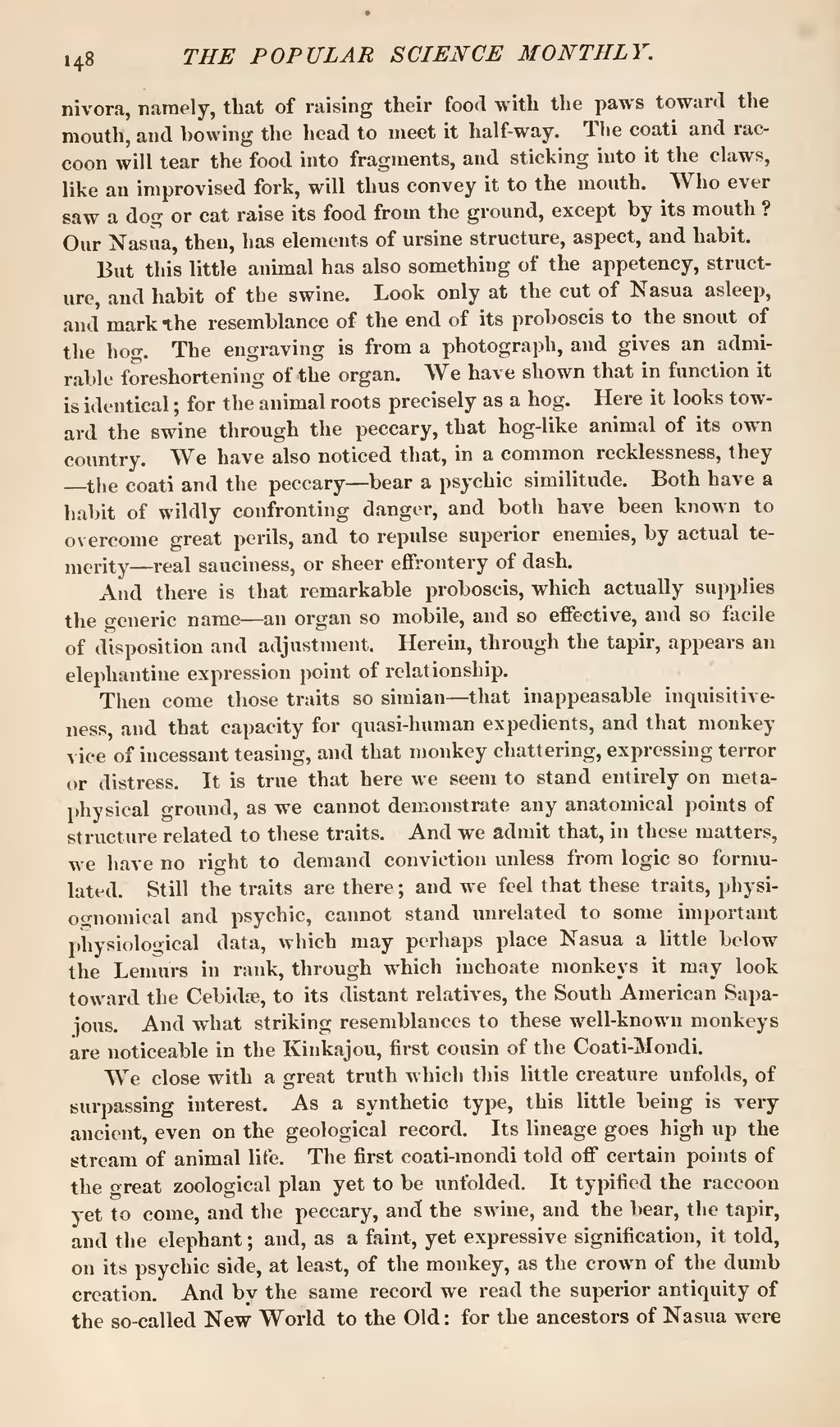nivora, namely, that of raising their food with the paws toward the mouth, and bowing the head to meet it half-way. The coati and raccoon will tear the food into fragments, and sticking into it the claws, like an improvised fork, will thus convey it to the mouth. Who ever saw a dog or cat raise its food from the ground, except by its mouth? Our Nasua, then, has elements of ursine structure, aspect, and habit.
But this little animal has also something of the appetency, structure, and habit of the swine. Look only at the cut of Nasua asleep, and mark the resemblance of the end of its proboscis to the snout of the hog. The engraving is from a photograph, and gives an admirable foreshortening of the organ. We have shown that in function it is identical; for the animal roots precisely as a hog. Here it looks toward the swine through the peccary, that hog-like animal of its own country. We have also noticed that, in a common recklessness, they—the coati and the peccary—bear a psychic similitude. Both have a habit of wildly confronting danger, and both have been known to overcome great perils, and to repulse superior enemies, by actual temerity—real sauciness, or sheer effrontery of dash.
And there is that remarkable proboscis, which actually supplies the generic name—an organ so mobile, and so effective, and so facile of disposition and adjustment. Herein, through the tapir, appears an elephantine expression point of relationship.
Then come those traits so simian—that inappeasable inquisitiveness, and that capacity for quasi-human expedients, and that monkey vice of incessant teasing, and that monkey chattering, expressing terror or distress. It is true that here we seem to stand entirely on metaphysical ground, as we cannot demonstrate any anatomical points of structure related to these traits. And we admit that, in these matters, we have no right to demand conviction unless from logic so formulated. Still the traits are there; and we feel that these traits, physiognomical and psychic, cannot stand unrelated to some important physiological data, which may perhaps place Nasua a little below the Lemurs in rank, through which inchoate monkeys it may look toward the Cebidæ, to its distant relatives, the South American Sapajous. And what striking resemblances to these well-known monkeys are noticeable in the Kinkajou, first cousin of the Coati-Mondi.
We close with a great truth which this little creature unfolds, of surpassing interest. As a synthetic type, this little being is very ancient, even on the geological record. Its lineage goes high up the stream of animal life. The first coati-mondi told off certain points of the great zoological plan yet to be unfolded. It typified the raccoon yet to come, and the peccary, and the swine, and the bear, the tapir, and the elephant; and, as a faint, yet expressive signification, it told, on its psychic side, at least, of the monkey, as the crown of the dumb creation. And by the same record we read the superior antiquity of the so-called New World to the Old: for the ancestors of Nasua were
